Plasmonic nanodarts for cancer therapy and antimicrobial treatment
 Researchers developed plasmonic nanodarts combining photothermal conversion and catalytic activity for effective cancer treatment and antimicrobial applications.
Researchers developed plasmonic nanodarts combining photothermal conversion and catalytic activity for effective cancer treatment and antimicrobial applications.

 Subscribe to our Nanotechnology Spotlight feed
Subscribe to our Nanotechnology Spotlight feed
 Researchers developed plasmonic nanodarts combining photothermal conversion and catalytic activity for effective cancer treatment and antimicrobial applications.
Researchers developed plasmonic nanodarts combining photothermal conversion and catalytic activity for effective cancer treatment and antimicrobial applications.
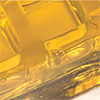 Novel approach allows solvent-independent 3D printing of organogels, enabling precise control over mechanical, thermal, and surface properties through post-print solvent infusion.
Novel approach allows solvent-independent 3D printing of organogels, enabling precise control over mechanical, thermal, and surface properties through post-print solvent infusion.
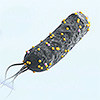 Engineered bacteria produce hydrogen sulfide and photothermal nanoparticles, enabling deep tumor penetration and synergistic chemodynamic cancer therapy.
Engineered bacteria produce hydrogen sulfide and photothermal nanoparticles, enabling deep tumor penetration and synergistic chemodynamic cancer therapy.
 Researchers create fully memristive neuromorphic chip integrating trainable dendritic neurons and high-density RRAM, enabling energy-efficient brain-inspired computing architectures.
Researchers create fully memristive neuromorphic chip integrating trainable dendritic neurons and high-density RRAM, enabling energy-efficient brain-inspired computing architectures.
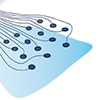 Researchers have developed 3D printable conducting polymer hydrogels for implantable bioelectronics, enabling long-term electrophysiological monitoring and modulation of organs.
Researchers have developed 3D printable conducting polymer hydrogels for implantable bioelectronics, enabling long-term electrophysiological monitoring and modulation of organs.
 Scientists have developed a highly deformable, adhesive electronic hydrogel inspired by amoebas that could enable customizable epidermal electronics.
Scientists have developed a highly deformable, adhesive electronic hydrogel inspired by amoebas that could enable customizable epidermal electronics.
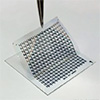 Researchers printed high-performance organic transistor arrays and logic circuits with an amorphous polymer semiconductor, achieving 100% yield, excellent uniformity, and the highest reported density of 100 printed transistors per square centimeter.
Researchers printed high-performance organic transistor arrays and logic circuits with an amorphous polymer semiconductor, achieving 100% yield, excellent uniformity, and the highest reported density of 100 printed transistors per square centimeter.
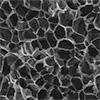 Scientists have developed a self-adhesive MXene hydrogel that can monitor vital signs, protect skin from UV, and deliver photothermal therapy.
Scientists have developed a self-adhesive MXene hydrogel that can monitor vital signs, protect skin from UV, and deliver photothermal therapy.